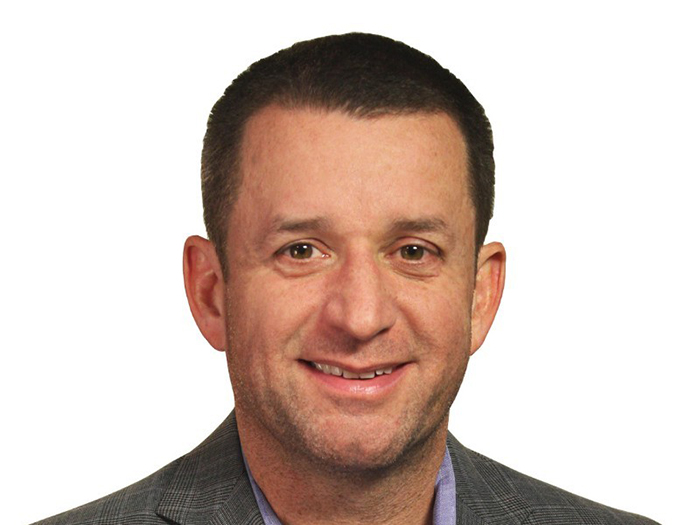Mental Health
The Mental Health Piece

Lowering total health costs so that businesses and communities can use the savings to invest in jobs is essential to long-term economic recovery. To achieve this, it’s imperative that a wide-angle lens be placed on the ability of individuals to truly manage their health.
There is little argument that health care costs are rising as a result of uncontrolled chronic conditions, coupled with a treatment emphasis on symptomatic relief instead of using evidence-based clinical guidelines.
Key signs of poor health management include a general lack of adherence to treatment, overloaded emergency departments, lost work days and presenteeism (being physically at work but mentally distracted). All of these indicators reflect the sick-care focus that is the hallmark of our piecemeal treatment system.
Workers’ compensation carriers need look no further than their horrendous combined ratios to know that there is something seriously wrong with our health care management system, of which workers’ compensation is, of course, just a small piece.
We believe the underlying culprit of poor health management is the lack of a coordinated approach to meeting the patient’s health needs through a whole-health approach that includes mental health solutions.
Health care providers, government policymakers and other stakeholders must start doing a better job of focusing on mental health as a part of the whole-person approach. We need to see patient-centered care as inclusive of mental and behavioral health care. As former Surgeon General Dr. David Satcher put it, “there is no health without mental health.”
It is generally accepted that the most prevalent physical conditions (like lower back pain, heart disease, diabetes, asthma, etc.) often are accompanied by a comorbid psychiatric condition. Ignoring this reality is costly and results in poor health care outcomes. People with diabetes and depression, for example, have four times the health care expenditures as those with diabetes alone.
Comorbidities can also decrease adherence to prescribed treatment plans. Individuals with depression are three times more likely to be non-compliant with their medical care plans.
Yet, despite the research, most people who need mental health counseling do not receive it. According to national epidemiologic surveys in the United States, the majority (about two-thirds) of people with symptoms of substance abuse and mental disorders receive no treatment at all for their conditions.
Lack of coordination and effective care management have clear implications for disability and return to work. People with chronic medical illnesses with co-occurring mental health conditions make up a considerable portion of disability costs.
As evidenced in a recent DMEC Employer Behavioral Risk survey of employers, absence can be reduced and return to work can be accelerated by incorporating a mental health professional into the mix of care providers.
DMEC has also found that health plans and plan sponsors (employers) under-report levels of depression and anxiety in their populations compared to rates of prevalence. At the same time, they see high levels of disability days, emergency room visits, and acute care, all of which increase when mental illness is under-managed.
Leverage EAPs
Data continue to prove that employers are experiencing a crisis in the prevalence and cost of mental health and stress in the workplace. For instance, a 2011 ComPsych survey revealed that 29 percent of employees said they came to work on at least five days during the year when they were too stressed to be effective. That figure was up 19 percent from the previous year.
One solution is already within reach for most employers — an employee assistance program (EAP). Based on a 2012 DMEC Behavioral Risk survey, fully 97 percent of employers surveyed had an existing EAP program. But whether they are using it effectively in many cases is arguable.
In another study, by the Journal of the American Medical Association, it was found that a systematic program to identify depression and promote effective treatment significantly improved clinical and workplace outcomes.
Employers can receive a significant return on investment from outreach and enhanced treatment of depressed workers for a cost of only $100 to $400 for low- to moderate-intensity interventions.
Effective changes can be made by:
* Broadening the use of behavioral health screening, evidence-based guidelines and measurement-based care that emphasizes treating to remission and improved functioning.
* Leveraging and promoting the existing solutions that typically go under-utilized, such as EAPs.
* Increasing the application of psychotherapy (such as cognitive behavioral therapy, or CBT) to treat the mind and body.
* Maintaining an early and consistent focus on return to work and recovery.
* Emphasizing functional improvement with a goal of return to work as a crucial component of treatment.
* Aligning incentives to reward improved outcomes of engagement, adherence, and quality.
Potential for Cost Savings
Screening people with chronic physical conditions to see if they have an accompanying mental condition is a useful tool for addressing comorbid mental health issues early on. Screenings can also assist in monitoring and managing chronic conditions and depression, as well as stress levels, adherence to condition management and even pain management. In essence, rather than prescribe a potentially addictive and costly pill, why aren’t we using cognitive therapy to get at the bottom of what’s bothering people?
Patients with diagnosed diabetes, arthritis, osteoporosis, musculoskeletal conditions, cancer, low back pain, RSD (reflex sympathetic dystrophy) hypertension, and obesity develop depression and anxiety at rates 30 percent to 50 percent higher than the rest of the population.
Research shows these patients often don’t stick to treatment regimens, resulting in higher costs for rescue treatments. They’re also prone to increased and sometimes inappropriate use of narcotics and alcohol, increased inpatient and outpatient days and a host of other issues.
Back to Work Faster
Several workers’ compensation payers are already employing cognitive therapy for claimants who suffer from chronic pain and psychosocial issues that hinder their recovery and return to work. When applied properly, this evidenced-based approach can help claimants return to work sooner and avoid chronic pain problems by helping them cope with work-related problems and emotional issues.
A recent study conducted in the Netherlands and published in the Journal of Occupational Health Psychology found that employees absent due to common mental health disorders returned to the job on average 65 days earlier when provided with work-focused CBT, saving employers an average of $5,275 per employee.
Simple screening tools can also be leveraged in a variety of settings. A short behavioral screen should be used at community clinics, urgent care clinics, biometric/lab testing, and with health risk assessments at the worksite.
A DMEC 2012 Behavioral Risk Survey revealed that the most effective return-to-work programs utilized referrals and the promotion of the employers’ EAP. An EAP can help strengthen bonds and can foster a focus on return to work and recovery.
Fully 63 percent of respondents to the survey refer their employees to an EAP and 57 percent actively promote these programs.
Both at work and at home, an EAP can foster an environment that increases productivity and employee retention.
The survey also found that the growth of the use of any mental health professional for psychological or psychiatric claims was significant, with 65 percent of firms using them for case management in 2012, compared to 48 percent in 2010.
Plans and purchasers must call for inclusion of behavioral health in the broader application of total health management. Additionally, there should be performance incentives that reward the time spent in assessing, evaluating and managing behavioral health issues, especially when managing chronic or acute care. Integrated data and collaboration across disciplines will be necessary.
The timing of this call to action on whole patient care is important. Between the 2008 Mental Health Parity Equity and Addiction Act and the 2010 Affordable Care Act, nearly every aspect of the nation’s health care system is undergoing change. A large part of that change is that individuals are being asked to take responsibility for their health.
Improved health behaviors are paramount to getting better outcomes. Improvement in lifestyle choices and point-of-care choices as well as adherence to care management are imperative to hold down total costs.
But for those with under-diagnosed or undermanaged depression and anxiety, the task can be daunting.
We can make our joint voices heard and we can make an impact on the lives of our employees and patients by treating the whole person as one fully integrated system. We can impact both health care cost savings and human cost savings by focusing on the whole person approach to health.










